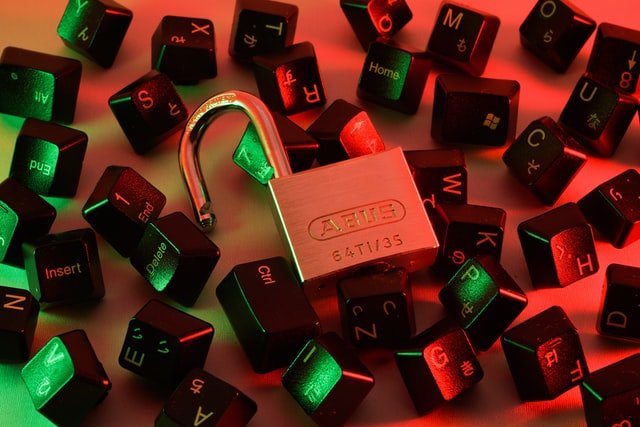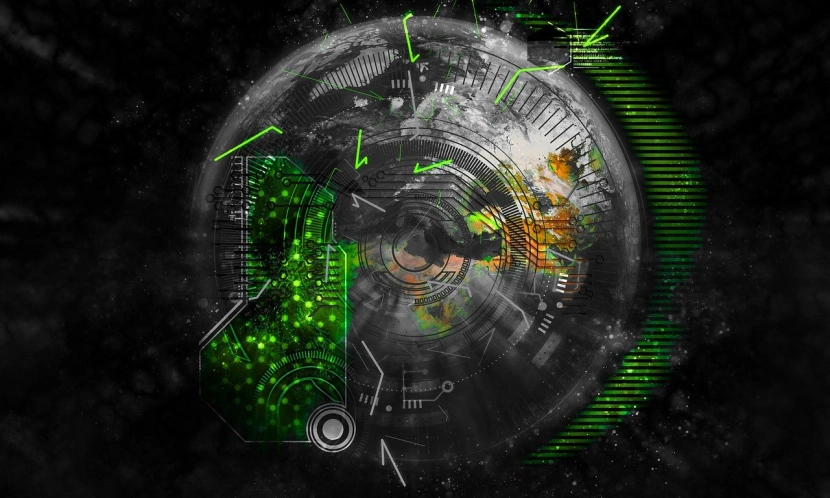Cyber Security 2022 The scene before the battle


Cyber Security 2022 The scene before the battle
How are Polish entrepreneurs dealing with the weakest link in the cybersecurity chain – employee neglect? What is most important in cybersecurity in 2022?

Poles are stubborn not only when vaccinating against COVID-19. There is an old anecdote about Stańczyk, which proves that every Polish is a doctor and that educated paramedics are not powers to us. The same is true when it comes to cybersecurity – the conclusion is clear after looking at the results of a study commissioned by Sophos. Thus, despite the fact that, according to 48% of Polish employees, companies need cybersecurity rules, only 42% of employees declare their knowledge of and compliance with these rules. At the same time, 10% of employees admit that they do not comply with the company’s security policy, for example when they are in a hurry. Polish employees are more skeptical of preventive solutions than respondents from the Czech Republic and Hungary – up to 7% of Poles doubt their implementation.
Perhaps this is a paradox because of the good guarantees that companies that hire skeptics use. This twisted logic might sound like this: I wouldn’t waste time for example on two-factor authentication, because absolutely nothing happened, it’s overkill with these hackers. How many employees think this way? Rather, the truth is: nothing happened because companies are not saving money on cybersecurity. It is an ever-present arms race where each new technological trend brings with it a new type of attack. Cybercriminals will change strategies and wait. Including testing and following technological trends. Companies should focus on securing servers with strict rules to control their configuration and the running of applications.
Check also:
However, this does not mean that hackers will not use proven methods for phishing attacks. The man is always the weakest component of the security system.
Working in the Cloud and its Security – Zero Trust Model
The pandemic has accelerated the transition of people and companies around the world to cloud computing. In times of remote working, we can no longer imagine running a business (or even a private life) without cloud solutions. With more and more companies and individuals using the cloud, the cloud has become a frequent target for attacks. Second, all organizations demand platforms and services that provide ease of use, management of limited resources, and uncomplicated and manageable configuration. Cloud services that provide these functions are very valuable. Cloud infrastructure does not require on-premises server or software maintenance. Users can easily check the status of assets and organization in real time, quickly get notifications about security and alarm events, and also respond to emergencies using only the mobile application.The cloud security industry provides the ability to remotely support customers in configuring devices, removing viruses, maintaining and increasing systems security, as well as providing value-added services.
So, the more you need to remember about cloud security. Today, Zero Trust is the alpha and omega approach to cloud security. Although its origins date back to 2010, the “distrust” approach has only gained popularity in recent years. The strategic initiative is designed to prevent data breaches by eliminating trust in the organization’s network architecture. The concept of “zero trust” is derived from the philosophy of “always trust and judge”.
According to Hikvision experts, the “no-trust” approach will underline the importance of cybersecurity, especially in the world of Internet of Things, augmented reality and virtual reality. More and more restrictive data security and privacy regulations have recently been introduced in key global markets, including the European Union’s Data Protection Regulation and China’s Data Protection Act, which impose greater requirements on cybersecurity. Extortion attacks against several companies to unblock data access in 2021 convinced us beyond any doubt that companies in every industry need to strengthen their network security architecture and provide additional network security.
Evolution of ransomware
According to the authors of the report “New Coming. Trend Micro Security Predictions for 2022”, servers will become the primary target of ransomware attacks.
Ransomware is constantly evolving. Terminal systems are the main target of attacks, but hackers are now focusing on unprotected services and associated security protocol breaches. Hybrid work increases the number of potential points of attack, making the work of security teams more difficult than ever. Attackers are expected to launch increasingly targeted and visible attacks. The appetite of cybercriminals is growing, and they also have more modern and sophisticated methods of cracking security.
To protect critical systems and environments from ransomware attacks, organizations must implement server security best practices and follow server security guidelines that apply to all relevant systems and applications.
Risks related to the implementation of the Internet of Things
Every device connected to the internet is a potential gateway for criminals. For them, the Internet of Things is a jungle of potential opportunities and room to show off. For example, the market for these smart cars to be sold by their manufacturers to commercial customers could be worth up to $750 billion by 2030. This, in turn, would create an underground demand for illegal filters that could prevent the reporting of risk data, or to cybercriminals. Tenants who can delete data from smart vehicle driving records. So IoT-related information will become a hot commodity in the world of cybercrime, prompting companies to pay attention to security vulnerabilities that could lead to data leakage or sabotage.
To protect this data from being hacked, the auto industry and security vendors will need to work together to begin developing an operating system that can become the industry standard for all connected vehicles. This, in turn, will help standardize security features.
Supply Chain Attacks
The emergence of the global pandemic has shown how the security of supply chains has been neglected. In 2021, there were several ransomware attacks on the supply chain targeting major brands – most notably the Kaseya IT management platform. So global supply chains will be targeted by quadruple blackmail techniques as companies expand their business in this field.
As companies invest in supply chain development processes through diversification, they may also inadvertently create security threats. New vendors may offer cloud services and applications with security policies that may not meet your actual needs or may not prioritize cloud security. Once the security of corporate environments is compromised, AaaS brokers can sell valid credentials to cybercriminals.
Trend Micro analysts also anticipate that there will be a wave of four-way racketeering that will be used to raise funds. This will include: retention of critical data for ransom, threats to disclose data and dissemination of information about a security breach, and threats to attack corporate customers and supply chain or supplier partners. Therefore companies should use a zero-trust approach when implementing their supply chain security strategy.
Artificial intelligence is an indispensable component of cybersecurity strategy
Artificial intelligence (AI) is widely used in the security industry today. More and more customers are appreciating the value of AI and finding new areas to use it in a variety of scenarios. In addition to ARTR, automatic event notifications and false alarm suppression systems, AI is also widely used, including in the detection of personal protective equipment, the prevention of falls from the elderly, the detection of minefields and much more. We are also seeing a greater willingness to collaborate, as manufacturers from the security industry are increasingly making manufactured devices available for use by third parties, as well as launching open customer platforms where they can create and share their own AI algorithms tailored to their individual needs.
Artificial intelligence is one of the core technologies driving the transformation of the security industry. Thanks to the improvement of algorithms, as well as the increase in computing power and the reduction in the cost of chips, made possible by new developments in semiconductor technology in recent years, the use of artificial intelligence has gradually become the basic functions and functions accepted by all sectors of the industry, so we have the basis for predicting the “spread of intelligence Artificial intelligence is everywhere,” we read in the Hikvision report.
Artificial intelligence and the Internet of Things (IoT) will advance digitization and will permeate various industrial sectors
The security industry uses Internet of Things solutions, enriching imaging possibilities thanks to the increasingly common use of surveillance cameras and other security devices. Today, the boundaries of the security industry are blurred and extend far beyond the realm of physical security. Meanwhile, the proliferation of AI technology allows connected devices to become intelligent “objects” in the world of the Internet of Things. The combination of artificial intelligence and the Internet of Things, or as we call it AIoT, is taking security industries to the next level, automating work flows and procedures in organizations, and supporting digital transformation in industries such as energy, logistics, manufacturing, retail, education, healthcare, etc. AIoT provides more opportunities for the industry to rapidly develop new application areas for security devices and systems.Currently, safety devices are increasingly equipped with new and powerful imaging technologies, including functions of radar, airborne laser scanning, temperature measurement, humidity sensors, and gas leak detection. New devices perform many more tasks than they did just a few years ago, when many different devices were needed to handle them, they fulfill security functions, but they also perform other intelligent functions that are essential in an ever faster developing world. Temperature measurement, humidity sensors and gas leak detection. New devices perform many more tasks than they did just a few years ago, when many different devices were needed to handle them, they fulfill security functions, but they also perform other intelligent functions that are essential in an ever faster developing world.Temperature measurement, humidity sensors and gas leak detection. New devices perform many more tasks than they did just a few years ago, when many different devices were needed to handle them, they fulfill security functions, but they also perform other intelligent functions that are essential in an ever faster developing world.
Integrated systems will eliminate data silos
Disaggregated data and information stored in incompatible systems or groups create barriers to information sharing and collaboration, preventing management personnel from gaining a comprehensive view of the business. In this field, an approach based on combining diverse information systems will work – it may allow the elimination of data silos. To be sure, employees working in private institutions and the public service sectors are eager to get rid of them. It is clear that the security industry strives to connect systems wherever possible, including but not limited to, in the areas of imaging, access control, alarms, fire prevention and emergency management. In addition, there are more and more systems that are not directly related to security, incl. human resources and financial systems,
Excellent quality safety case visualization will be standard in all weather and physical conditions, at any time of the day
In the case of surveillance cameras, the most important thing is to maintain the clarity of the image and record events 24 hours a day in all conditions, including different weather conditions. Cameras equipped with twilight technology, recording the image in color and in high definition also in the evening and at night, are very popular in the market. Hikvision experts note that the range of technically advanced models (such as 4K, variable focal length and PTZ) is expanding. In addition, high-performance imaging sensors are used to ensure greater clarity of surveillance cameras in poor visibility conditions – especially in bad weather, intelligent signal processing technology (ISP) and artificial intelligence algorithms, thanks to which the cameras are able to record clear and accurate images.
When it comes to imaging technology, the goal is to mount multiple lenses in new cameras. Single-lens cameras cannot capture details from a distance or panoramic view in the case of large objects. It offers only one of these two features. However, equipping a single camera with several lenses allows you to simultaneously record panoramic and detailed views, and obtain a close-up image of some elements of a large-sized facility, allowing its use in facilities such as airports, ports, transit stations, parking lots, stadiums and sports fields.
Biometric access control will improve security
Authorized access control has changed dramatically over the past decades, and keys have been replaced by PIN codes and identification cards. Today, biometric authentication for fingerprints and fingerprints, but also the face and iris, is taking the access control market by storm. Biometric access control brings a number of benefits, including greater security and efficiency, but also reduces the possibility of impersonation. Verification takes only seconds – even fractions of a second – and avoids physical contact. Iris, handprint and face verification provide contactless access control, which is becoming more and more desirable as a result of the pandemic.
Environmental production and low emissions
All industries, including security, prefer products with low energy consumption, for example, customers are increasingly looking for solar-powered cameras. Meanwhile, local legislation, regulations and policies that tighten CO2 emissions standards are forcing companies to use environmentally friendly practices in their operations and production, including the use of more environmentally friendly plastics, as well as adapting energy-efficient designs to the needs of production processes. .
How do we build an effective cybersecurity strategy?
Everything seems to indicate that the security industry is redefining itself. It deviates from traditional security measures and develops activities in new security areas that will provide communities, businesses and societies with new advances in analysis and sustainability.
Trend Micro experts advise organizations to develop a multi-layered cybersecurity strategy that is immune to disruptions and security breaches, which should include:
• Back to Security Basics
• Use a mistrust approach
• Enhance server security and use access control mechanisms
• Prioritize vision
• Move to more effective security features with the right solutions and level of expertise



